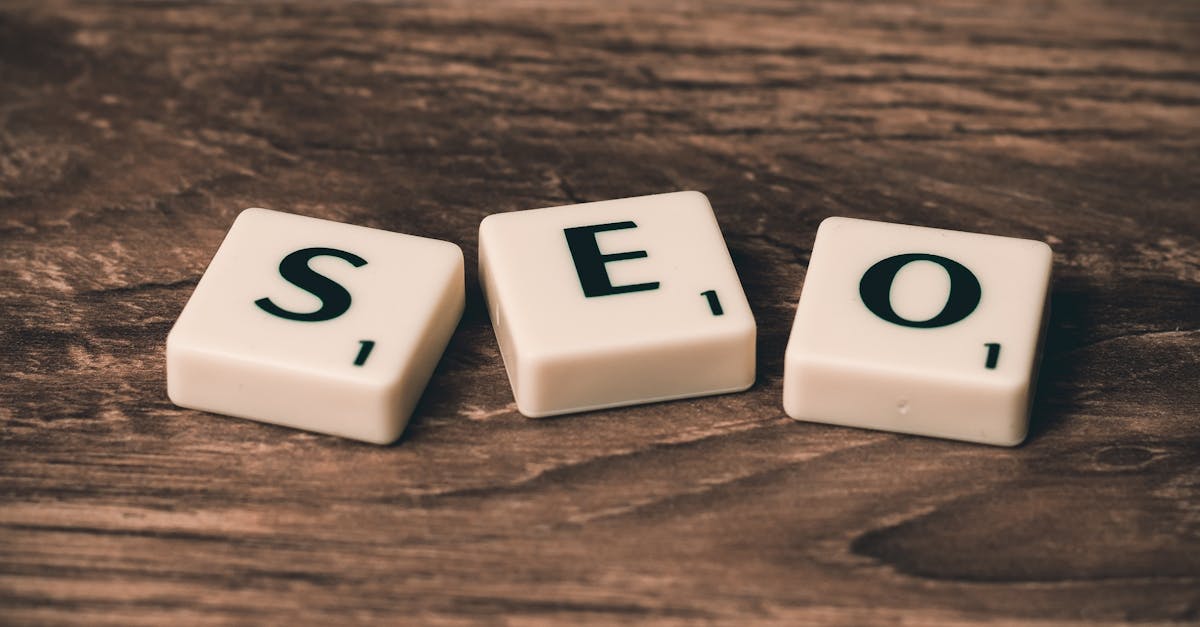
Table Of Contents
Tracking CPC in Google Analytics
CPC, or Cost-Per-Click, is a vital metric in Google Analytics that measures the cost incurred for each click on a paid advertisement. This is particularly relevant in contexts like Pay-Per-Click (PPC) Advertising, where businesses pay for each visitor directed to their website. Tracking CPC allows marketers to assess the performance of their ad campaigns, giving insights into the effectiveness of specific keywords and ad placements.
To track CPC in Google Analytics, users typically set up Goals and Ecommerce tracking, enabling the analysis of user behaviour post-click. By examining the CPC data, marketers can identify which campaigns yield a good return on investment and optimise their advertising strategies accordingly. Effective tracking of this metric not only highlights areas for improvement but also supports data-driven decisions that can enhance overall marketing effectiveness.
Setting Up and Interpreting Reports
To effectively set up reports for tracking CPC in Google Analytics, it's essential to ensure that your campaigns are structured accurately. Begin by using UTM parameters when creating your ad URLs. This allows Google Analytics to accurately attribute traffic and conversion data to specific campaigns. Within the platform, navigate to the Acquisition section and select Campaigns to view detailed insights on your CPC initiatives. The data presented will include metrics such as clicks, cost, and conversion rates, providing a comprehensive understanding of your campaign performance.
Interpreting the reports requires a keen eye for detail. Look for trends in your CPC metrics over time, allowing you to gauge the effectiveness of your advertising spend. Understanding the relationship between your Pay-Per-Click (PPC) Advertising and conversion rates is vital. High CPC but low conversion rates may indicate that your ads are being shown to the wrong audience or that landing pages need optimisation. Regularly reviewing this data can help inform your strategic decisions and improve overall campaign performance.
Tracking PPC in Google Analytics
Tracking Pay-Per-Click (PPC) Advertising in Google Analytics is essential for assessing the effectiveness of your marketing campaigns. By linking your PPC accounts, such as Google Ads, you can monitor key performance indicators like clicks, conversions, and overall return on investment. This integration allows for a comprehensive view of user behaviour after they interact with your ads, turning raw data into actionable insights.
To set up tracking for PPC campaigns, navigate to the Admin section of Google Analytics and link your Google Ads account. From there, you can create custom reports that display performance metrics specific to your PPC efforts. Understanding this data helps marketers adjust their strategies, optimise ad spend, and ultimately improve campaign outcomes. By continuously monitoring the results, businesses can refine their PPC tactics over time, leading to better engagement and conversion rates.
Setting Up and Interpreting Reports
Setting up reports to track metrics related to Cost-Per-Click (CPC) in Google Analytics is essential for understanding campaign performance. First, ensure that you have linked your Google Ads account with Google Analytics. This connection allows for a seamless flow of data, enabling you to access metrics such as click-through rates, conversion rates, and average CPC. By navigating to the Acquisition section, you can find reports that specifically highlight how visitors interact with your site after clicking on your ads.
Interpreting these reports requires a keen eye on several important metrics. One of the primary indicators is the return on ad spend (ROAS), which helps evaluate the effectiveness of your campaigns. For those invested in Pay-Per-Click (PPC) advertising, tracking metrics like bounce rate and session duration can provide insights into the quality of traffic generated from paid campaigns. Understanding these data points can inform future advertising strategies, leading to more effective use of your budget and resources.
Advantages of Using CPC
CPC, or Cost Per Click, offers distinct advantages for businesses focusing on their online advertising strategies. By allowing advertisers to pay only when a user clicks on their ad, CPC models enable precise budget management. This approach assists in tracking the actual engagement levels of ads and can lead to more sustainable spending when optimised effectively. As potential customers show interest by clicking, businesses can assess the return on investment for each campaign, making adjustments based on performance.
In the realm of online marketing, incorporating CPC into advertising strategies provides an edge over traditional methods. Unlike Pay-Per-Click (PPC) Advertising, where costs can fluctuate with competition and overall web traffic, CPC maintains a level of predictability in expenditure. This stability allows marketers to cultivate long-term strategies that can evolve based on data driven insights. Advertisers benefit from measuring key performance indicators effectively, ensuring resources are directed towards the most efficient campaigns.
LongTerm Cost Efficiency
The long-term cost efficiency of CPC strategies often makes them a more sustainable option for advertisers. By focusing on the most relevant keywords and optimising campaigns, businesses can achieve a higher return on investment over time. This approach allows for better budget management and ensures that funds are allocated to high-performing segments. With careful monitoring and adjustments, advertisers can maximise their spending and reduce wasted costs.
In contrast, Pay-Per-Click (PPC) Advertising may provide immediate results, but its costs can escalate quickly without a strategic plan. Advertisers need to carefully analyse their campaigns to avoid budget blowouts that lead to diminishing returns. Through efficient management, CPC can help create a more predictable financial landscape, enabling businesses to allocate resources more effectively while still driving traffic and conversions.
FAQS
What does CPC stand for in Google Analytics?
CPC stands for Cost Per Click, which is a model used in online advertising where advertisers pay a fee each time their ad is clicked.
What does PPC mean in Google Analytics?
PPC stands for Pay Per Click, which is a broader term that encompasses any form of online advertising where advertisers pay for each click on their ads, including CPC.
How can I track CPC in Google Analytics?
You can track CPC in Google Analytics by setting up specific reports and campaigns that measure the performance of your ads based on the cost paid for each click.
Are CPC and PPC interchangeable terms?
While CPC and PPC are related, they are not interchangeable. CPC specifically refers to the cost incurred for each individual click, whereas PPC refers to the overall model of payment for advertisements based on clicks.
What are the advantages of using CPC in advertising?
The advantages of using CPC include greater control over advertising budgets, the ability to optimise bidding strategies for long-term cost efficiency, and the potential for higher returns on investment when campaigns are well-managed.

















































